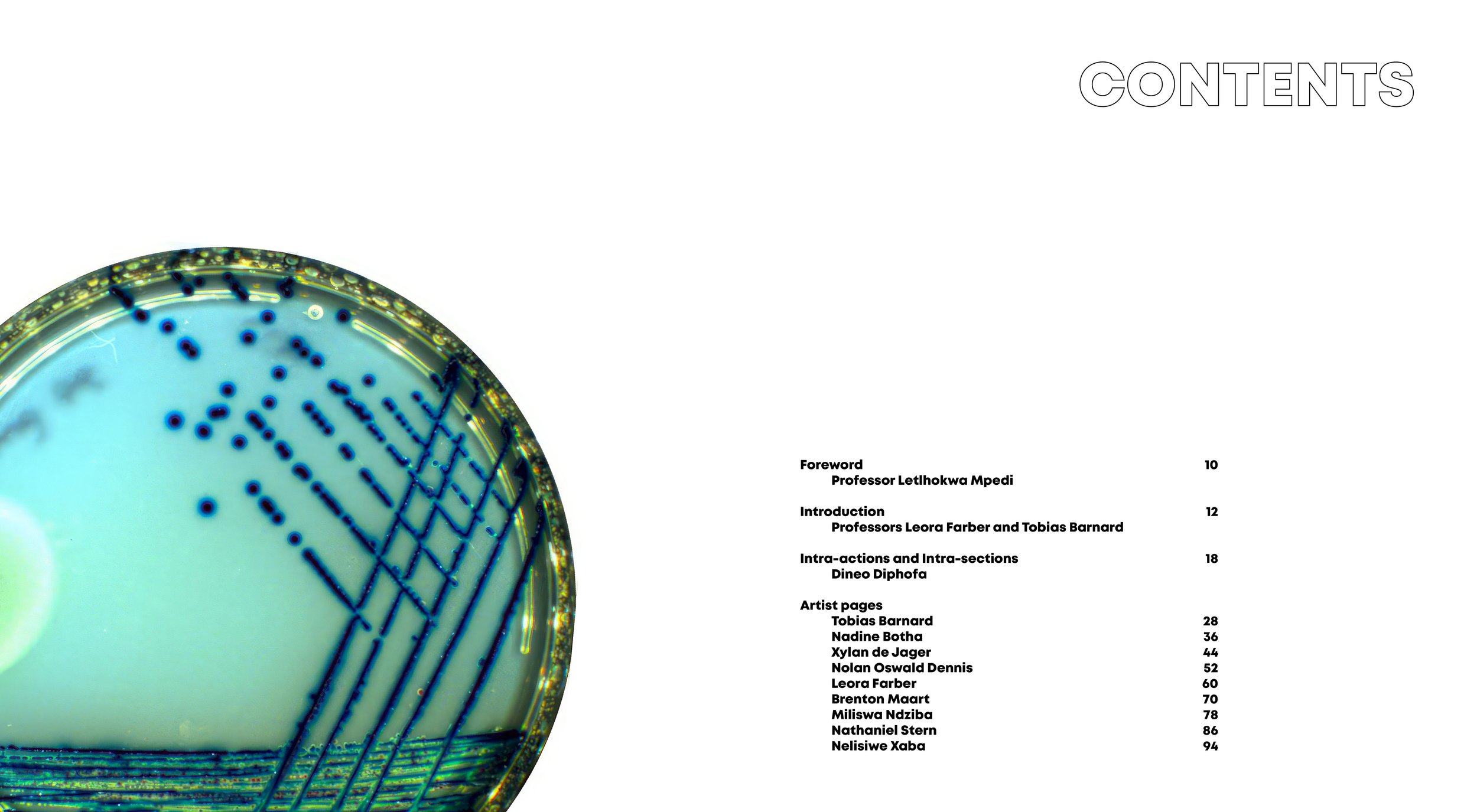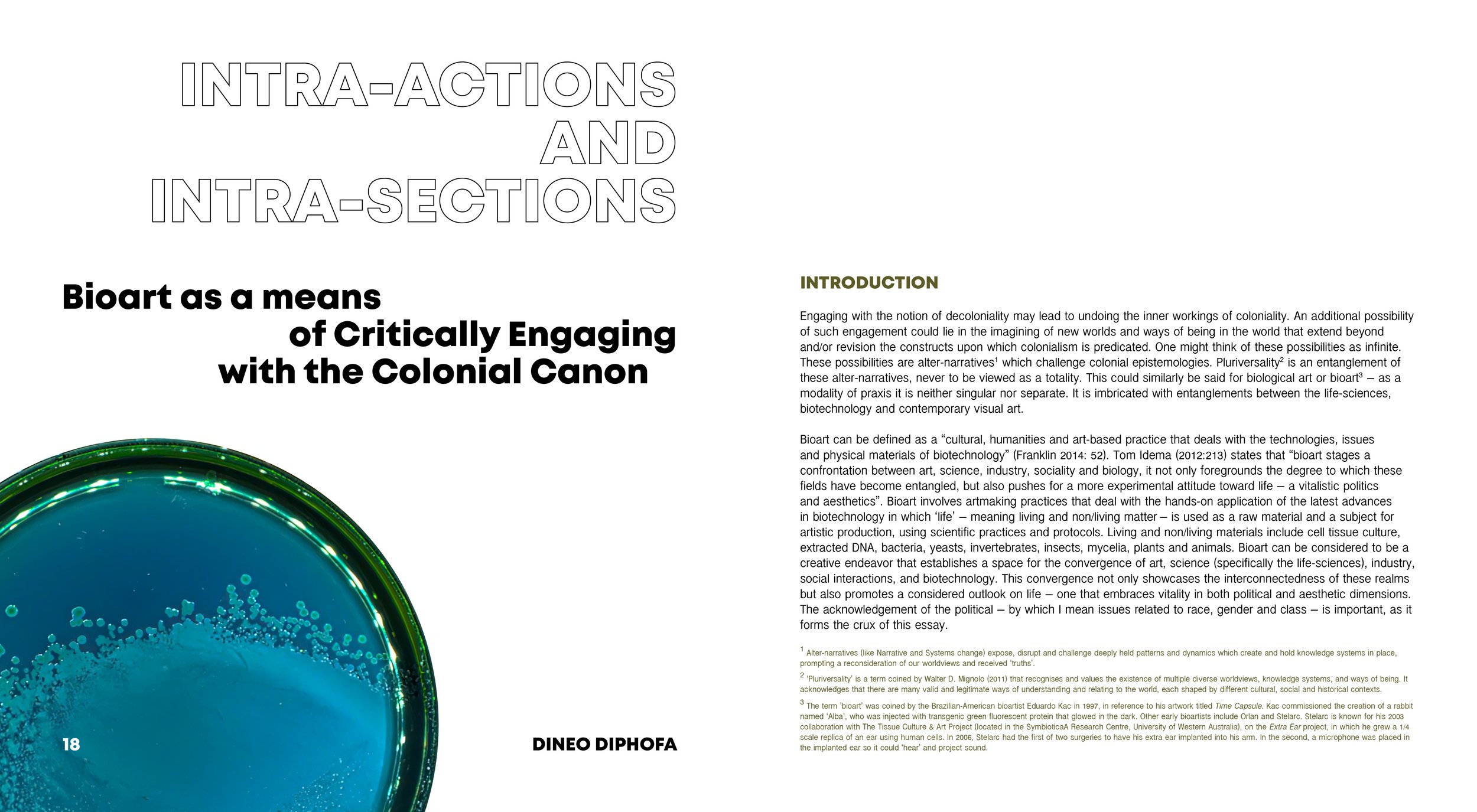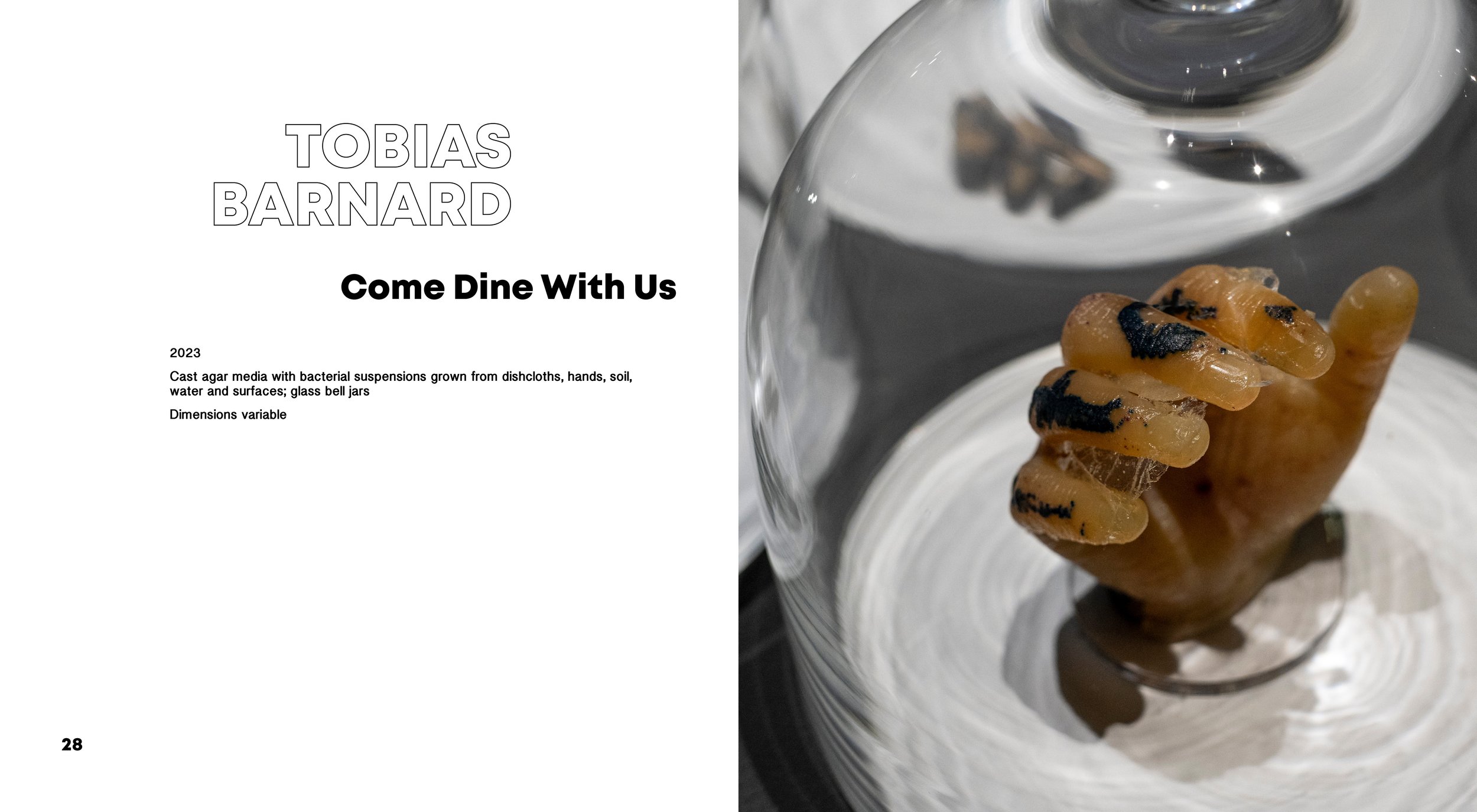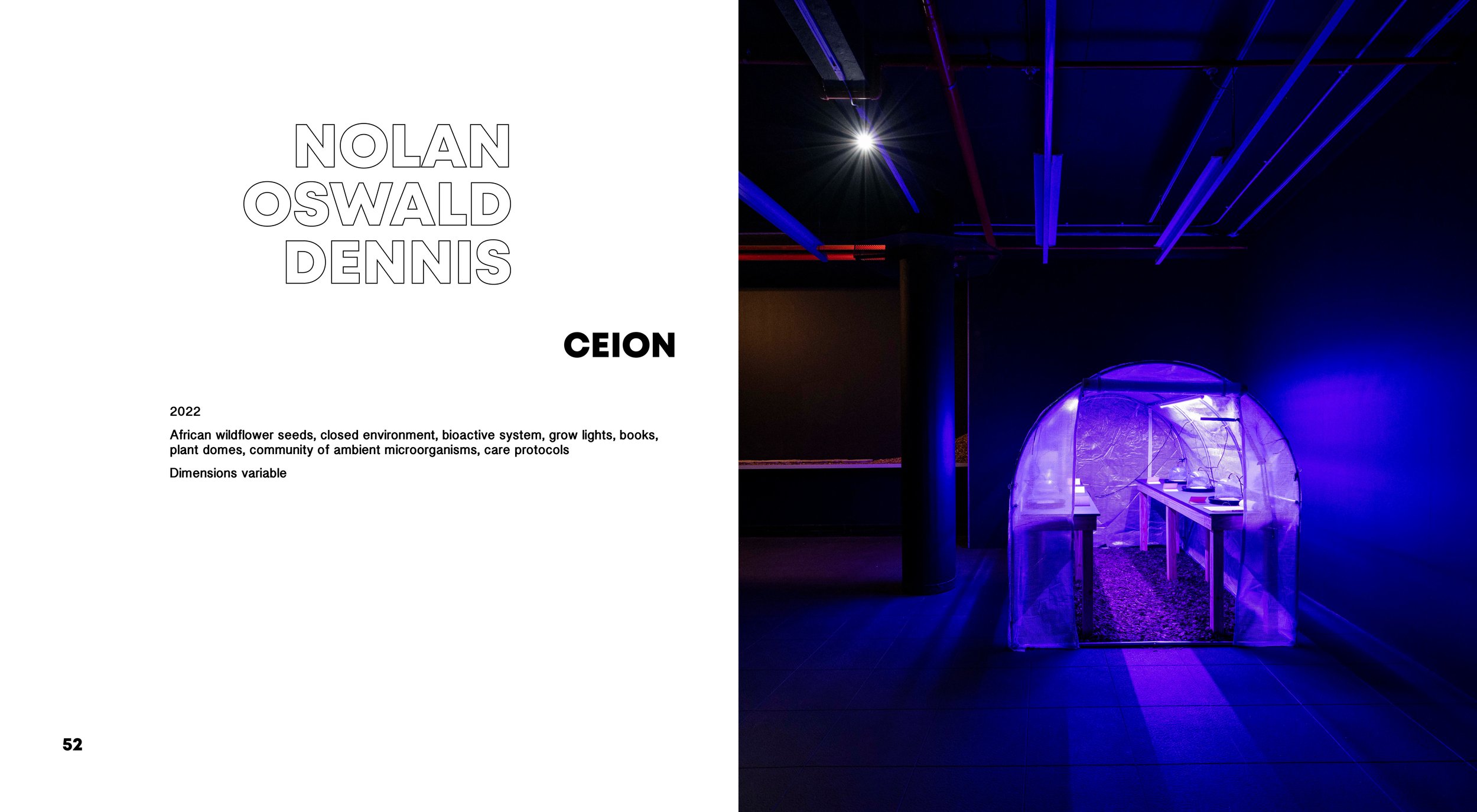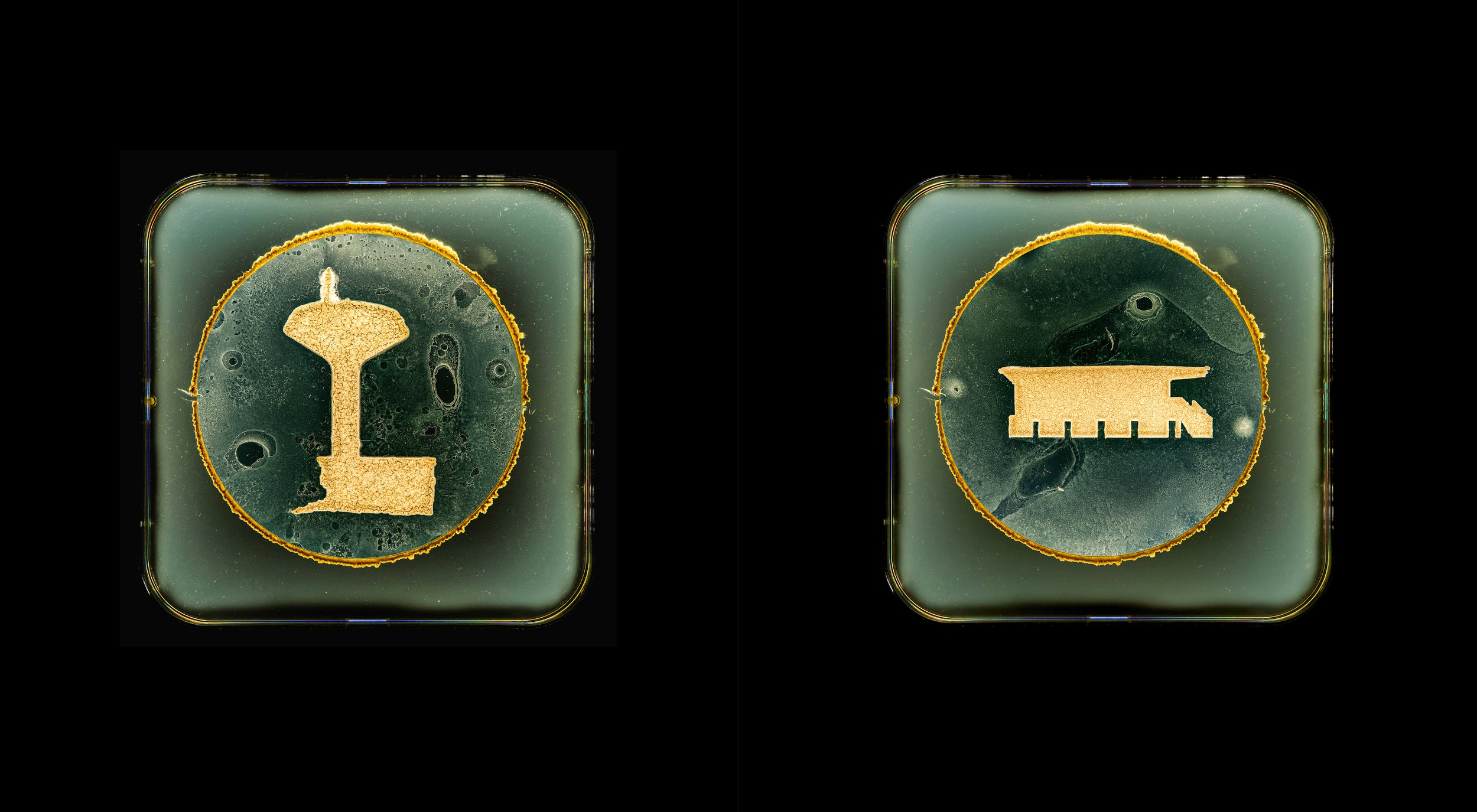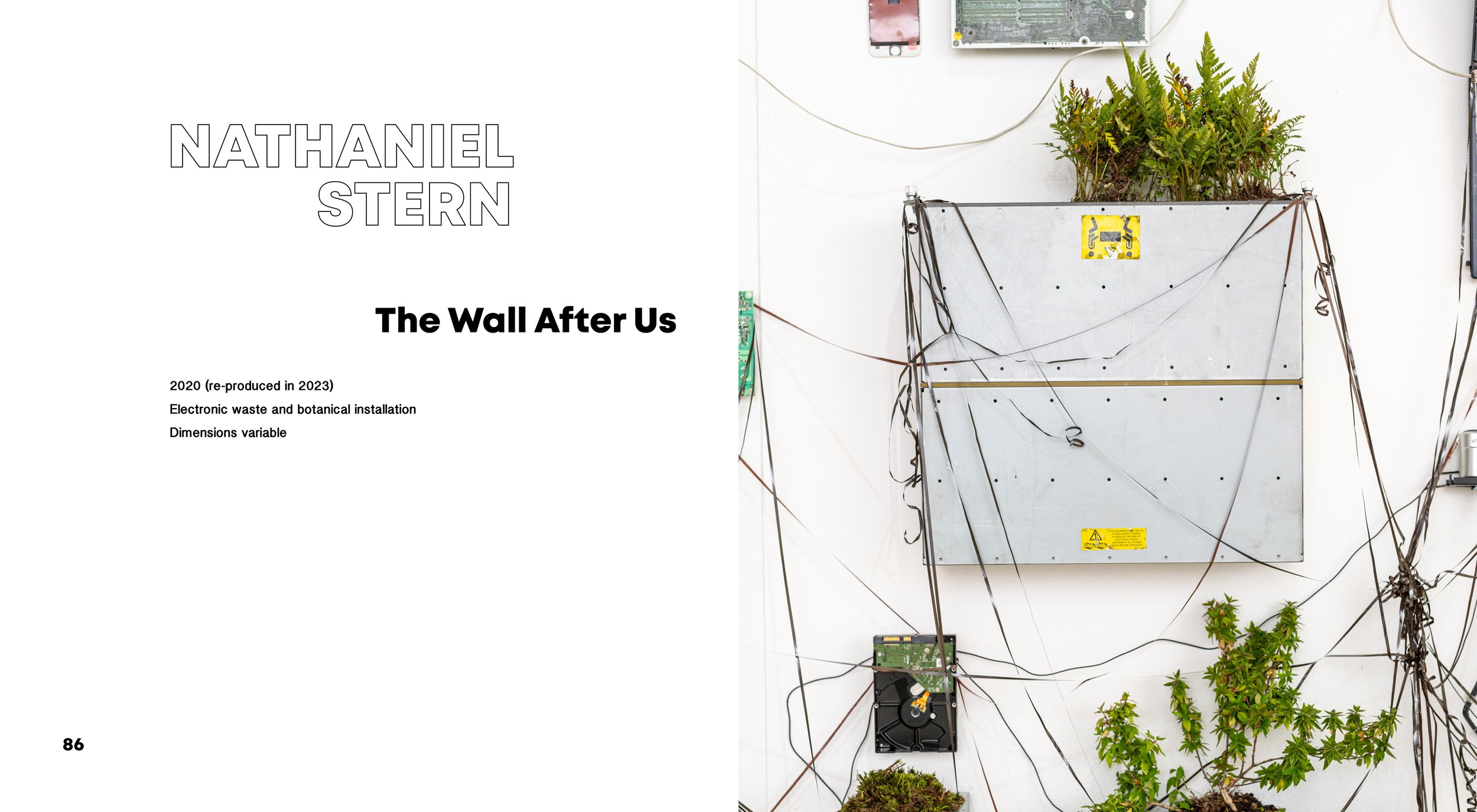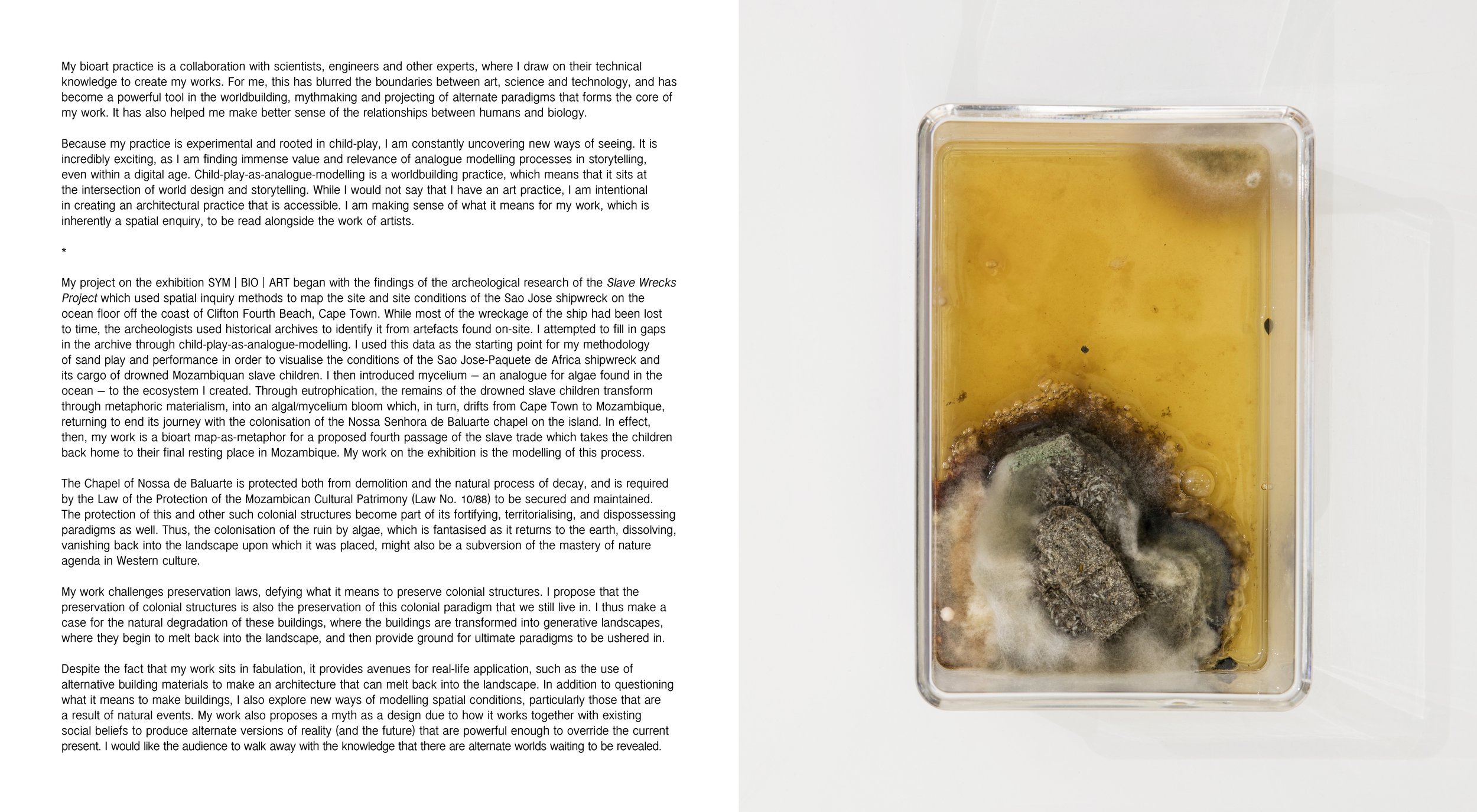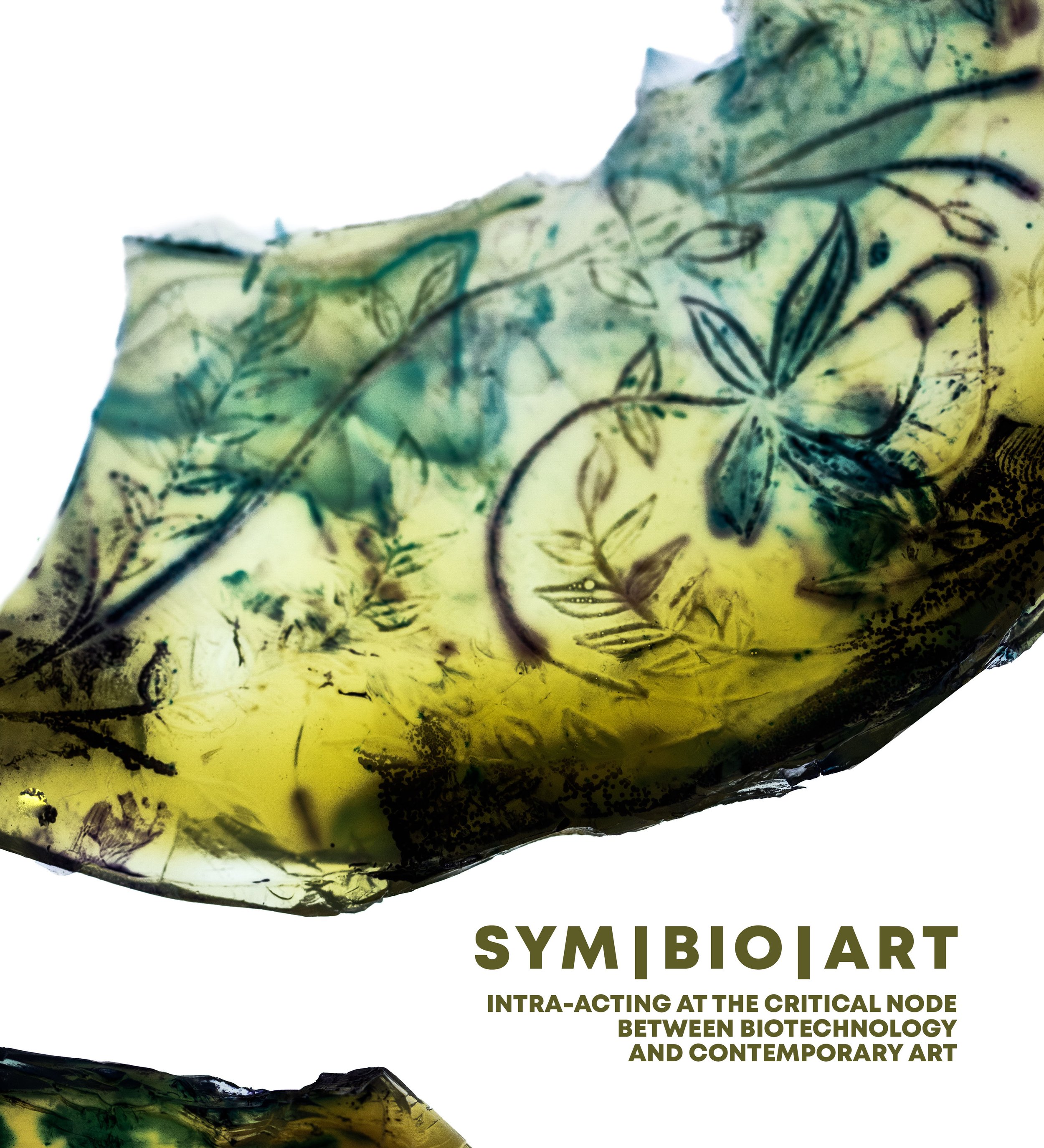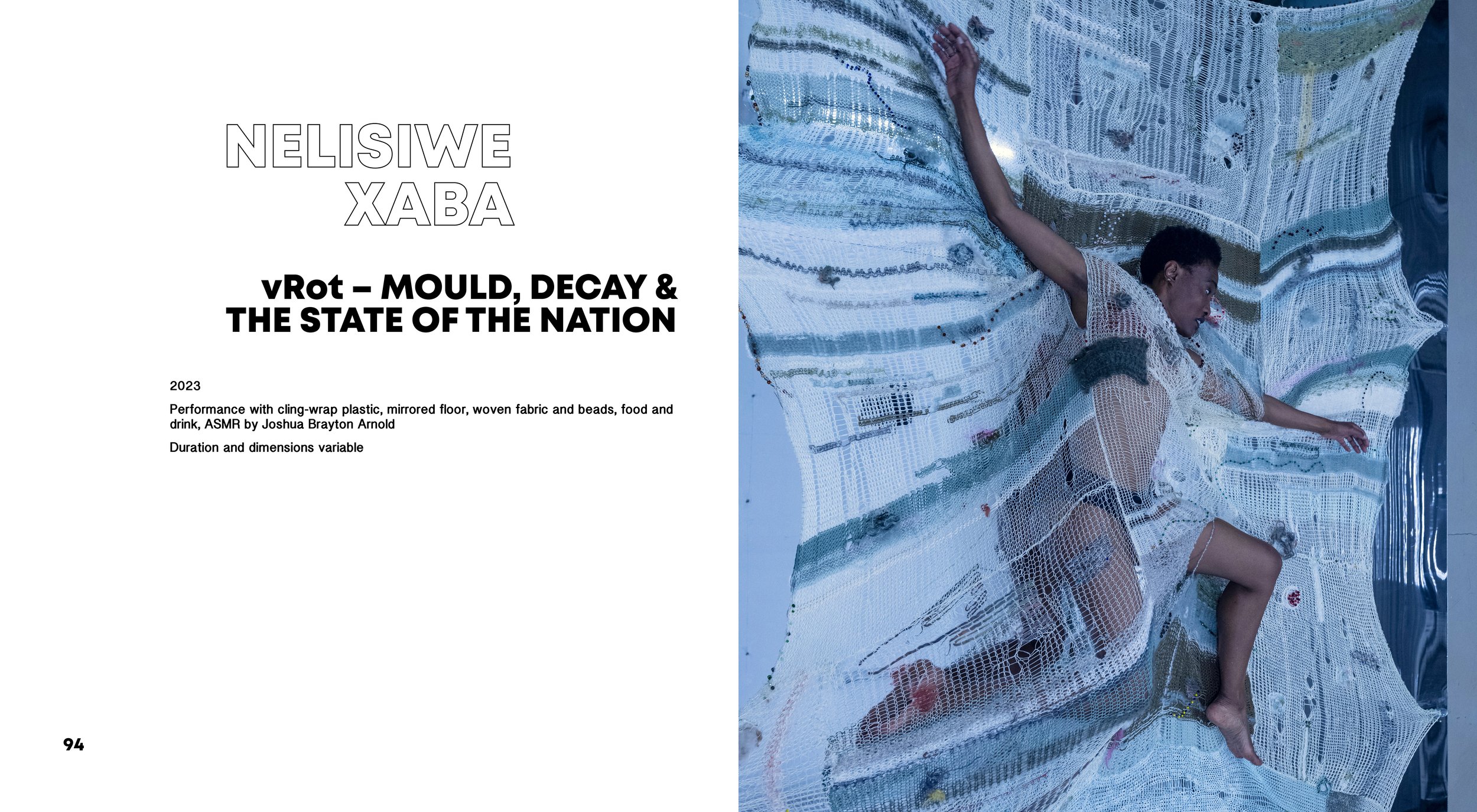SYM | BIO | ART: INTRA-ACTING AT THE CRITICAL NODE BETWEEN BIOTECHNOLOGY AND CONTEMPORARY ART
The catalogue to the exhibition SYM | BIO | ART: INTRA-ACTING AT THE CRITICAL NODE BETWEEN BIOTECHNOLOGY AND CONTEMPORARY ART (FADA Gallery, 2023) – a gorgeous 106-page electronic publication – celebrates the creative visual outputs, scholarship and political agency of the first exhibition of UJ’s Bioart + Design Africa.
The Foreword by UJ Vice-Chancellor and Principal, Professor Letlhokwa Mpedi, underlines imperatives of the arts and sciences working together, quoting African American engineer and astronaut Mae Jemison who said, “Sciences provide an understanding of a universal experience, Arts are a universal understanding of a personal experience...they are both a part of us and a manifestation of the same thing...the arts and sciences are avatars of human creativity.”
The Introduction by Bioart + Design Africa founders Professors Leora Farber and Tobias Barnard locates the work of the collaboration internationally and, more importantly, within the African continent. They note that, “[Creative Microbiology Research]…can be a powerful platform for African…bio-art/ design practitioners – to express and address concerns that are relevant and particular to the continent – be these socio-political, historical or environmental.”
The essay by Dineo Diphofa – titled Intra-actions and Intra-sections: Bioart as a means of Critically Engaging with the Colonial Canon – provides an art historical and political context for contemporary bioart practice. Diphofa draws parallels between canons and exhibitions as dynamic sites of evolution and flux – not static and dogmatic as history tries to make us believe, but “as sites for inquiry, critique and debate.” The essay defines for the reader the broad themes underpinning the exhibition, which “include intersectionality, environmental politics as well as colonial discourses pertaining to race. More specifically, these themes include an exploration of the colonial impact on land ownership and labour; indigenous connections to the land and language; displacement; the exploitation of natural resources; pollution, and ecological degradation.” By examining and interpreting how the artists and artworks on exhibition challenge colonial dichotomies, the essay maps ways in which bioart may be applied to undo the inner workings of coloniality. Diphofa writes that, “By subverting historical western notions linked to power and control, bioart can serve as a means of reclaiming agency and challenging the hegemonic forces that have shaped colonial relationships with living and non/living matter… and foster a more inclusive and equitable society.”
The second part of the catalogue is dedicated to the artists on exhibition, and provides edited excerpts of interviews with, and depictions of artworks, by Tobias Barnard, Nadine Botha, Xylan de Jager, Nolan Oswald Dennis, Leora Farber, Brenton Maart, Miliswa Ndziba, Nathaniel Stern and Nelisiwe Xaba. These pages, along with the text, help in constructing a vibrant and vivid view of the contribution of contemporary art to the evolution of a new practice based on new methodologies, new materialities and new forms of knowledge, new insights and perspectives, and how these may come together to redress some of the insidious effects of colonialism and other forms of human rights abuse.
